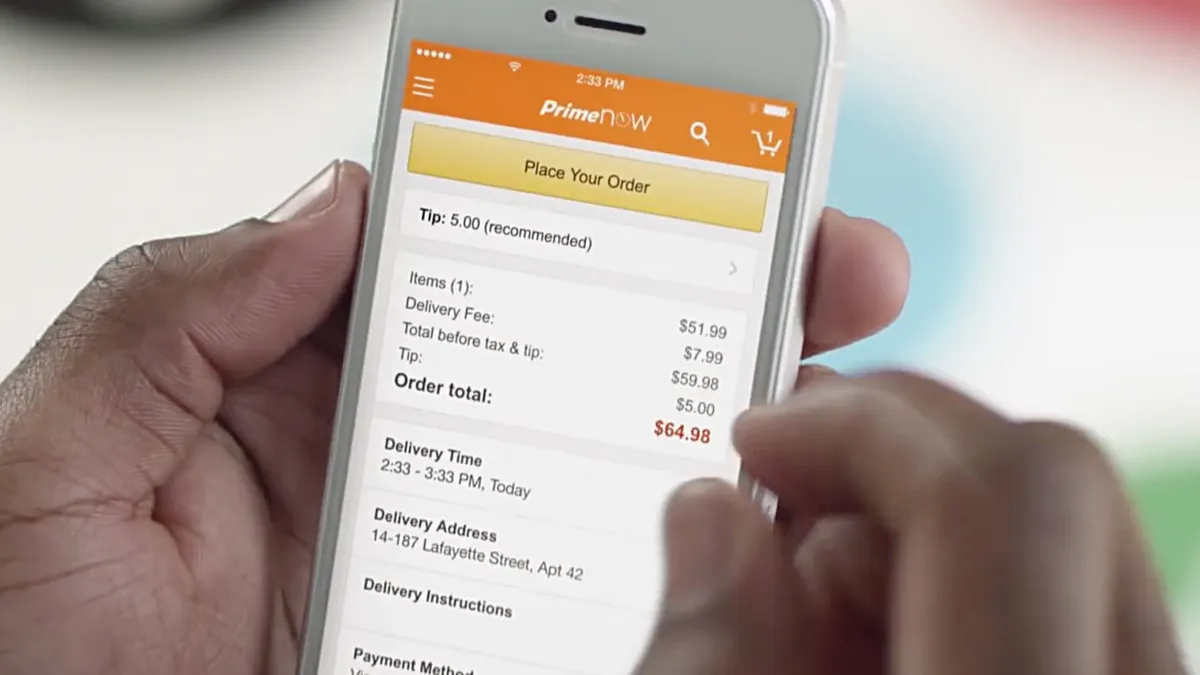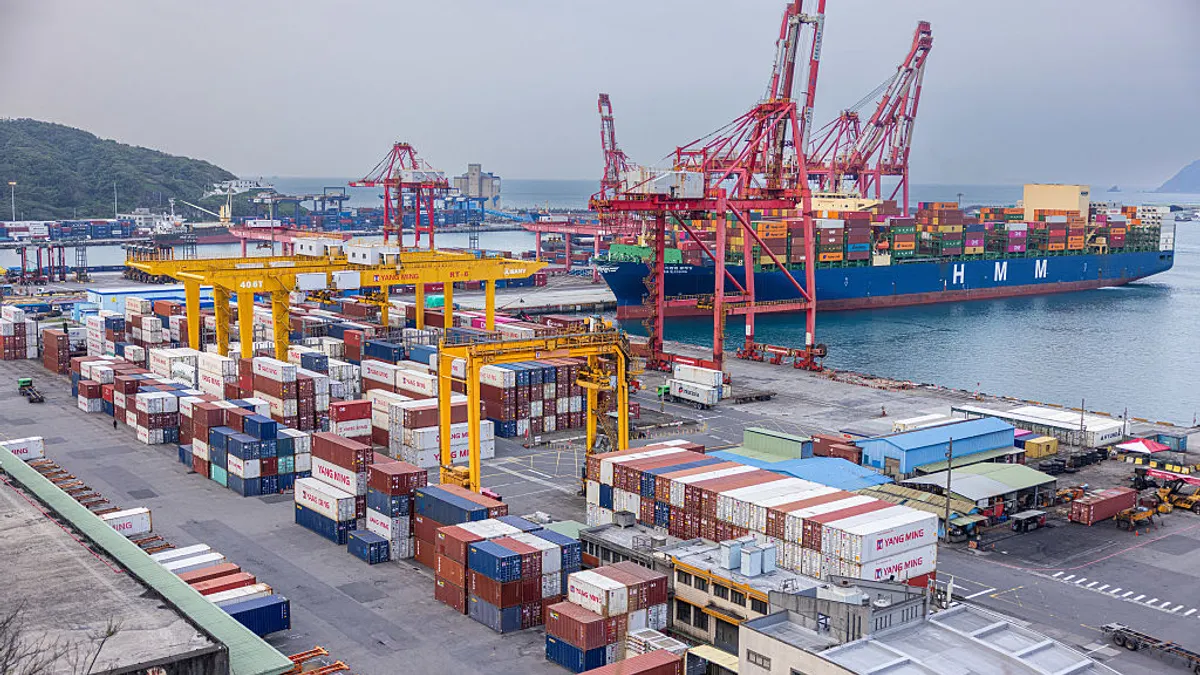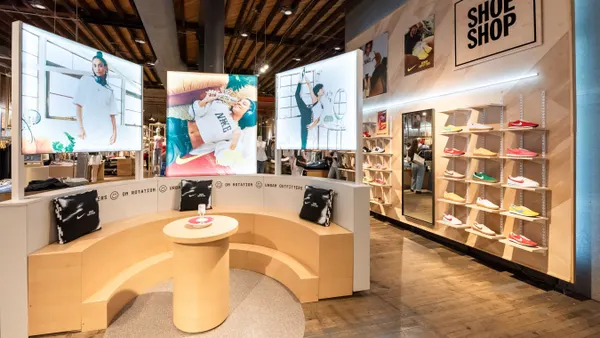Dive Brief:
-
Amazon will be expanding its Prime Now delivery program by adding the option when customers checkout on its website, Bloomberg reports, citing access to internal company documents.
-
Prime Now, which includes free two-hour and $8 one-hour deliveries for Prime members, began in New York City in December 2014 and has since expanded to 25 U.S. cities and London. At the moment the service is only mobile application-based in areas where it’s available.
-
As part of the Prime Now web launch, Amazon is planning a marketing blitz, and is in the midst of selling advertising space to brands. A “Launch Hero Package,” priced at $500,000, includes a week of featured placement on Amazon’s website related to the launch and in e-mail to customers. Amazon didn’t confirm any of these details to Bloomberg.
Dive Insight:
Much of Amazon’s activity these days—its Prime Day last year, its increase of its non-Prime minimum orders for free shipping, and same-day delivery options—is aimed at increasing its number of Prime members.
That’s understandable. There are all kinds of enviable stats regarding Amazon’s Prime members: They’re in nearly half of American households, according to Consumer Intelligence Research Partners, and 74% convert compared to 13% of non-Prime members, according to a study last summer from Millward Brown Digital. They’re also wealthier and younger than the customers of Amazon’s rivals, according to Cowen & Co.
But Amazon’s Q4 delivery costs topped $5 billion, including $4.17 billion paid to outside shippers like UPS and FedEx and despite collecting $4.17 billion in shipping fees from customers. That’s likely why Amazon is so keen on developing its own fulfillment and delivery infrastructure, and why it’s investing in everything from trucks and cargo planes to its same-day services, which employs contract drivers.
Amazon has been intent on making buying stuff from toothpaste to televisions as frictionless as possible, and that means that many Prime members are buying smaller items and taking advantage of their two-day shipping perk, a huge expense for Amazon. To combat that, Amazon has taken steps like labeling more lower-priced items as “add-on” items, which require a $25 minimum order even for Prime members. That, of course, is adding friction back in, and could undermine Amazon’s advantage if Prime members encounter it too often.
Same-day delivery, as Amazon CFO Brian Olsavsky himself said on a conference call last quarter, "is difficult and expensive, but customers love it.” Just last week, Amazon placed second in Prosper Analytics' 2015 Customer Service Champions list, an annual ranking of customer service, trailing only L.L. Bean. Prime benefit perks are responsible for Amazon’s high rating, Prosper said.















